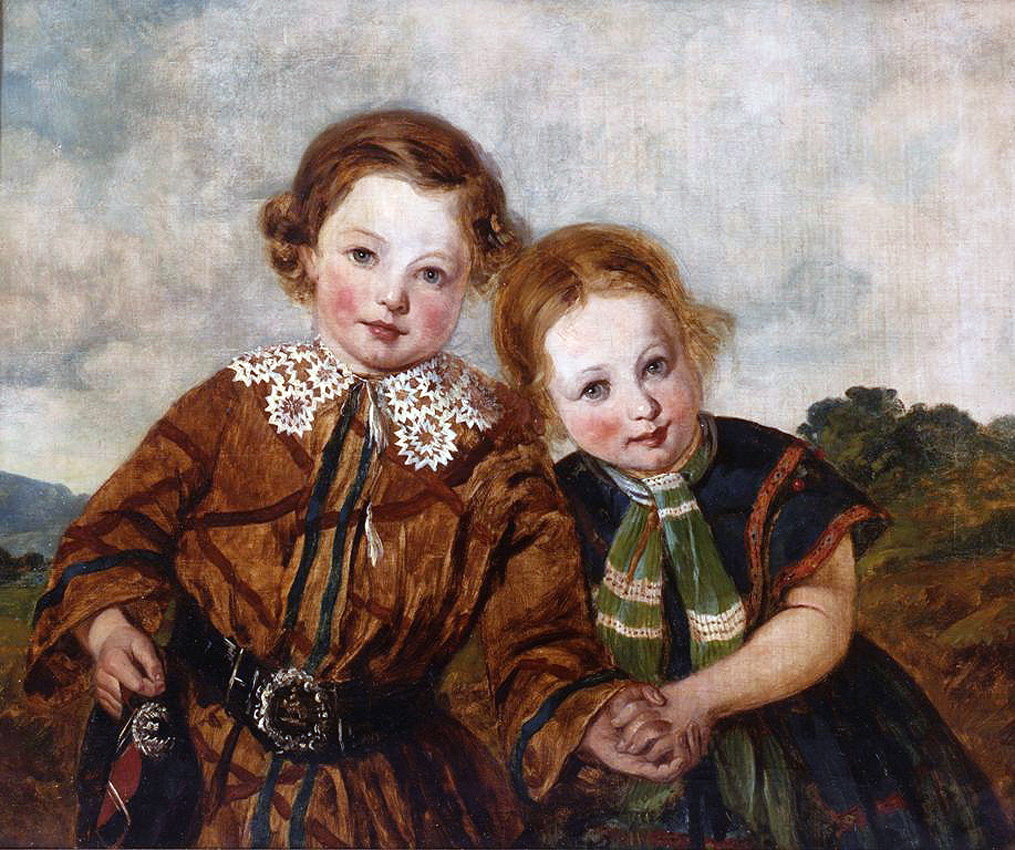William Paterson was born in Edinburgh in 1854 and was a small boy when he came to Otago on the Jura in 1858. This portrait (with his sister Mary) was painted just before the family left Scotland. Some of his father’s cousins had emigrated in the early 1850s and their positive accounts encouraged the Patersons to follow them. His father, James, worked briefly in a roading gang before setting up in his old Edinburgh trade as a baker. However, in 1864 he decided to become a farmer and purchased land at Port Molyneux in South Otago. The family made the long journey south by dray.
James Paterson was ill-suited to farming life and in 1867 he purchased the general store at Port Molyneux instead. When he was old enough, William joined him in the business and in 1875 was given charge of a second store at nearby Puerua. He married Isabella Begg in 1881 and the couple had four children together in a marriage that lasted for over 60 years.
William was a devout Presbyterian and a temperance enthusiast who led the campaign for prohibition in the Clutha district. In 1894 Clutha was the first electorate in the country to vote for ‘no licence’ thereby banning liquor-selling outlets.
When William retired from the store in 1913 he moved to Dunedin. Two years later he took over as Secretary of the Early Settlers Association. He was a great choice for the role. With his public relations skills developed as a country storekeeper and his fabulous memory for names and faces he was a mine of information on Otago history. Despite his advanced age he was also a very active custodian of the Museum. For 27 years he busily organised its affairs, climbing up on ladders well into his 80s to rearrange the portraits on the walls in this room and hang new additions to the collection.
In fact as a genuine ‘early settler’ himself, William Paterson was for many years the Museum’s most interesting relic! He died in his 90th year, only relinquishing his Museum duties in his final short illness. It seems only proper that his portrait should look down over the scene of his labours and he can take his rightful place among the pantheon of ‘early settlers’ whose memory he worked so hard to preserve.

Master William and Miss Mary Paterson